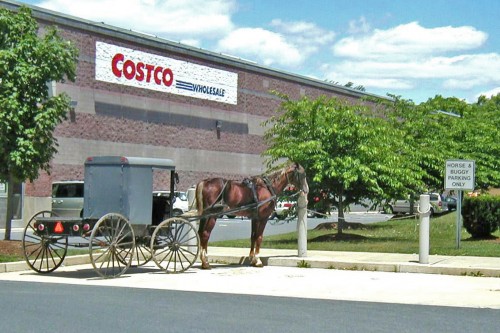
Many people have misconceptions about the Amish and their way of life. While many people know that Amish are frugal, one of the biggest misconceptions due to this is that they maintain a way of life that’s reminiscent of “the good old days” and that doesn’t rely on money. However, many of the beliefs people hold about Amish culture are nothing more than myths. Here are a few different money related myths about the Amish:
Use of Money
You might be surprised by how many people believe that the Amish don’t actually use money. Money has factored into most cultures and civilizations in some way, shape, or form. There’s a common misconception that the Amish have a trade and barter system in place of money, but like most people, they do deal with money to pay for their everyday expenses or bills.
Banks
There’s also a myth that because the Amish don’t rely heavily on cash, they also don’t use banks. The Amish do, in fact, use banks for many things such as taking out loans and mortgages or making deposits and withdrawals. While they tend to use smaller, local banks over larger, corporate banks, they do use banks.
Credit Cards
While it may not be hard to believe that the Amish use banks and checking accounts, some people are surprised to learn that some Amish communities also have members who use credit cards. While the use of credit cards still isn’t as popular as using cash or checks, it’s definitely something that’s available to most Amish communities. Some Amish business owners find it particularly helpful.
Income Taxes
One of the biggest myths about the Amish culture is that they’re exempt from paying income taxes. However, this isn’t true. The Amish are required to pay state and federal income taxes just like any other citizen.
Other State and Federal Taxes
The Amish are also not exempt from paying a variety of other state and federal taxes such as property tax, sales tax, or taxes for public schools (despite the fact that they fund their own private schools). They are, however, exempt from paying Social Security tax as the community has their own method of financing healthcare and lifestyles for the retired and elderly. But, as with income taxes, they are required to pay almost all of the same state and federal taxes as most American citizens.
Pooling Money
There’s also a common misconception that all income and assets go into one giant fund that is evenly distributed. That’s not necessarily true. While there are communal funds that can help someone out in an emergency or if they’re having financial difficulty, most people keep what they earn and pay their bills out of their own bank accounts rather than from a communal fund.
Travel Expenses
A lot of people believe that people from Amish communities don’t travel very far outside their local towns or regions. However, many of them do go on vacations. While many members often travel in larger groups to reduce overall costs, it’s not that unusual for people of the Amish culture to go on vacations that are regional, domestic, or international. Their vacation destinations and means of travel are just slightly different than that of a non-Amish person.
Shopping in Chain Stores
One of the biggest myths about the Amish culture is that every community is isolated from the outside world. But many people within Amish communities do shop for goods and products outside of Amish-run shops. While many Amish people shop in salvage stores or dry goods stores that are typically Amish run, you can also find them shopping in large super and warehouse stores such as Costco. They view shopping at chain stores as a matter of economic practicality since the prices are low and they can take advantage of bulk items.
Owning Businesses
Many people often believe that an Amish owned business is nothing more than a roadside stand to sell goods and wares they’ve created. While some Amish people do operate this type of business, others have businesses that sell products across state lines, on different coasts, or even internationally. Some also pay money for advertising or websites. Additionally, some Amish owned businesses are also required by law to pay Social Security taxes is they are co-owned by or employing non-Amish workers.
Technological Expenses
Another huge misconception about the Amish culture is that they refuse to spend any money on technological expenses such as cellphones or computers. While not all members of the community may own such products, there are a few who do spend money on them. You can often find business owners using cellphones or computers to keep in touch with employees both on-site and off. Some Amish business owners find that technology is also a great way to advertise their business or keep in touch with non-Amish employees, customers, or partners. So while there may not be technology in every Amish home or community, it’s not entirely unheard of for an Amish person to use technology.
(Photo courtesy of Jett Brooks)
Give the gift of savings! Learn more
Comments